Two blocks of equal mass have been placed on two faces of a fixed wedge as shown in figure. The blocks are released from position where centre of one block is at a height h above the centre of the other block. Find the time after which the centre of the two blocks will be at same horizontal level. There is no friction anywhere.
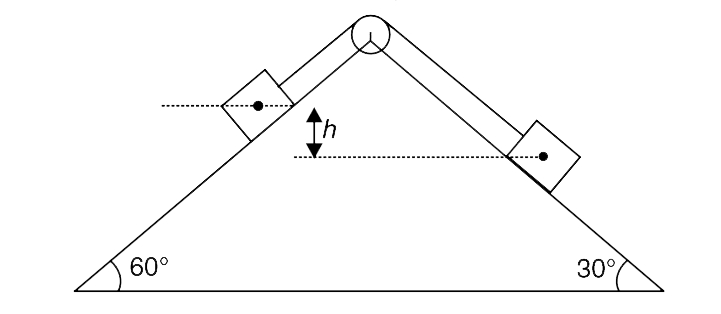
The correct Answer is:2√2hg
Step by step video, text & image solution for Two blocks of equal mass have been placed on two faces of a fixed wedge as shown in figure. The blocks are released from position where centre of one block is at a height h above the centre of the other block. Find the time after which the centre of the two blocks will be at same horizontal level. There is no friction anywhere. by Physics experts to help you in doubts & scoring excellent marks in Class 11 exams.
Updated on:21/07/2023Topper's Solved these Questions
Similar Questions
Two blocks A and B of equal masses are released on two sides of a fixed wedge C as shown in figure. Find the acceleration of centre of mass of blocks A and B. Neglect friction.

View SolutionTwo blocks A and B each of equal masses m are released from the top of a smooth fixed wedge as shown in the figure. Find the magnitude of the acceleration of the centre of mass of the two blocks.
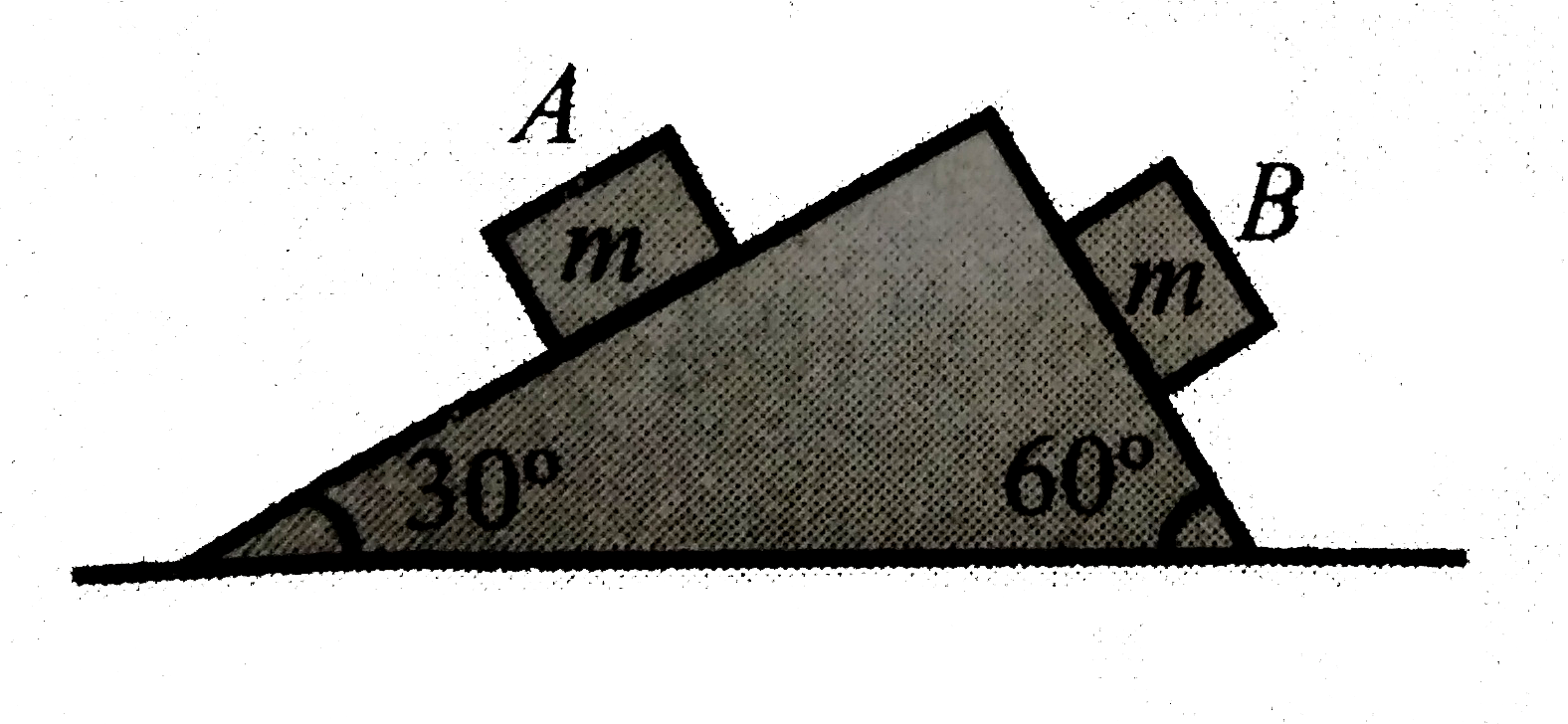
View Solution
Knowledge Check
Two blocks, each having mass m, are connected with an ideal string through ideal pulleys on a frictionless fixed wedge as shown in the figure. The acceleration of the blocks is
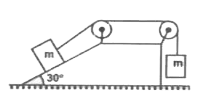 Ag/2Bg/4C2g/3D3g/4
Ag/2Bg/4C2g/3D3g/4A block of mass m1 lies on top of fixed wedge as shown in figure 1 and another block of mass m2 lies on top of wedge which is free to move as shown in figure 2. At time t=0, both the blocks are released from rest from a vertical height h above the respective horizontal surface on which the wedge is palced as shown. There is no friction betwen block and wedge in both the figures. Let T1 and T2 be the time taken by block in figure 1 and block in figure 2 respectively to just reach the horizontal surface then:
 AT1>T2BT1<T2CMagnitude of normal reaction on block of mass m2 is equal to that on the block of mass m1DAfter falling through same height (less than h) from top of wedge, the speed of block of mass m2 is less than that of block of mass m1
AT1>T2BT1<T2CMagnitude of normal reaction on block of mass m2 is equal to that on the block of mass m1DAfter falling through same height (less than h) from top of wedge, the speed of block of mass m2 is less than that of block of mass m1Two blocks of equal mass 2 kg are placed on a rough horizontally surfaces as shown and a force F is applied on the upper block . The system is initially at rest . Find acceleration of the lower block in m/s2 .
 A3m/s2B5m/s2CZeroDnone of these
A3m/s2B5m/s2CZeroDnone of these
Two blocks of equal mass are tied with a light string, which passes over a massless pulley as shown in figure. The magnitude of acceleration of centre of mass of both the blocks is : (neglect friction everywhere)
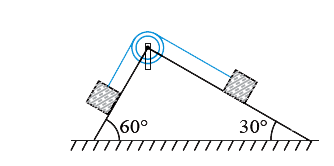
View SolutionTwo blocks A and B of equal masses are attached to a string passing over a smooth pulley fixed to a wedge as shown in figure. Find the magnitude of acceleration of centre of mass of the two blocks when they are released from rest. Neglect friction.
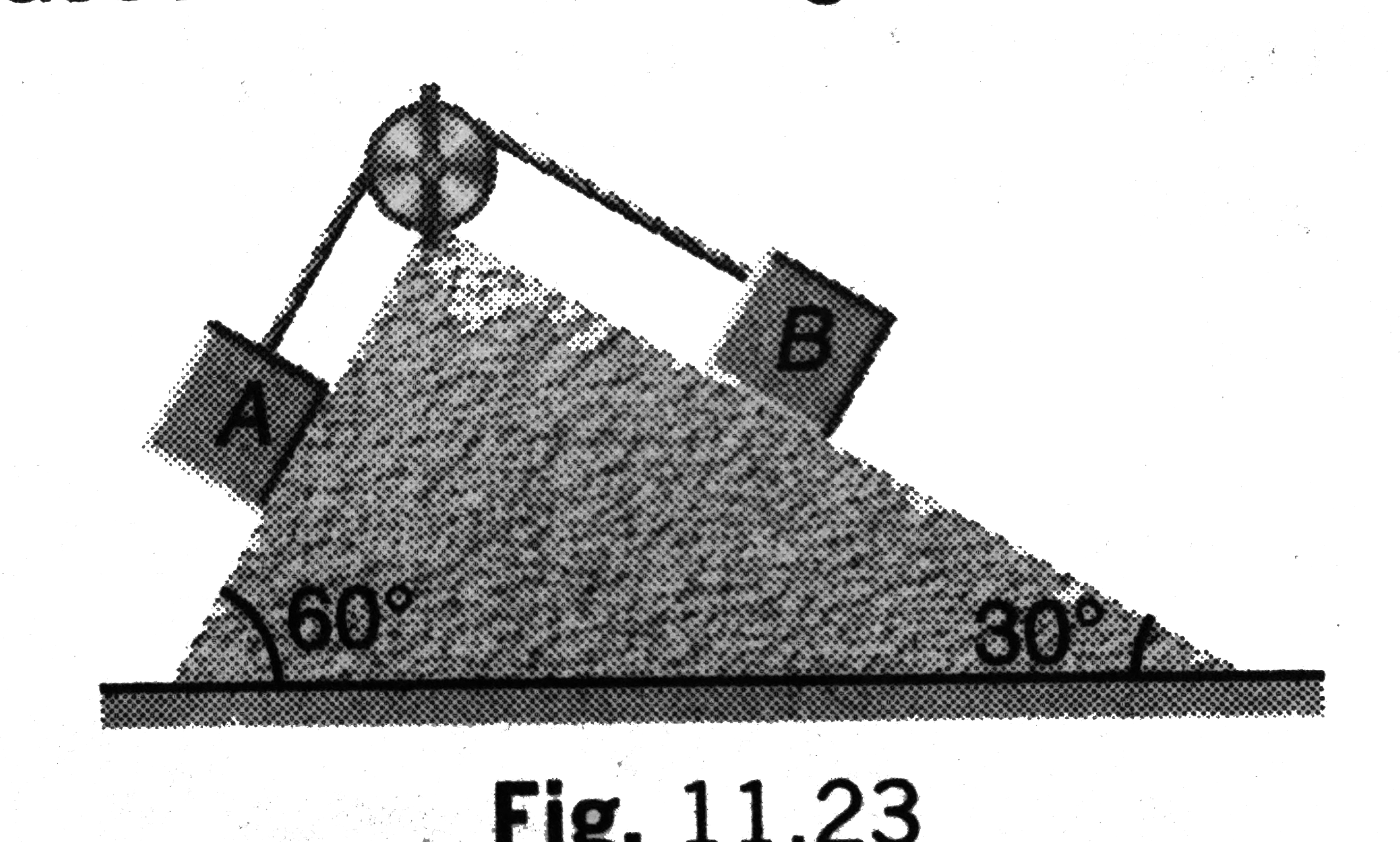
View SolutionA block of mass m slides down on inclined wedge of same mass m as shown in figure . Friction is absent everywhere . Acceleration of centre of mass of the block and wedge is
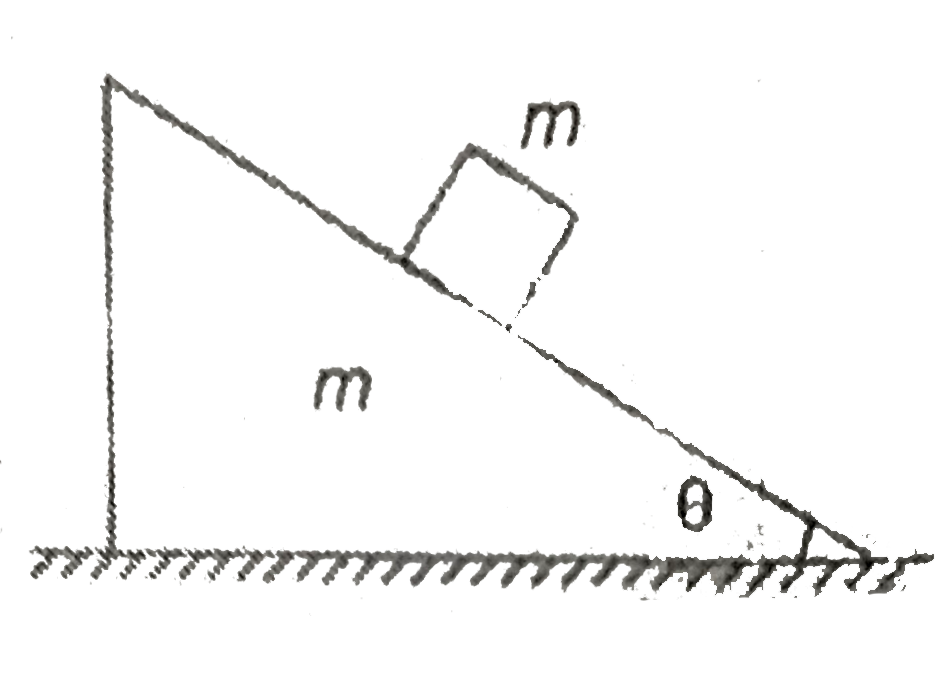
View SolutionA block A slides over an another block B which is placed over a smooth inclined plane as shown in figure . The coefficient of friction between the two blocks A and B is μ . Mass of block B is two times the mass of block A . The acceleration of the centre of mass of two blocks is
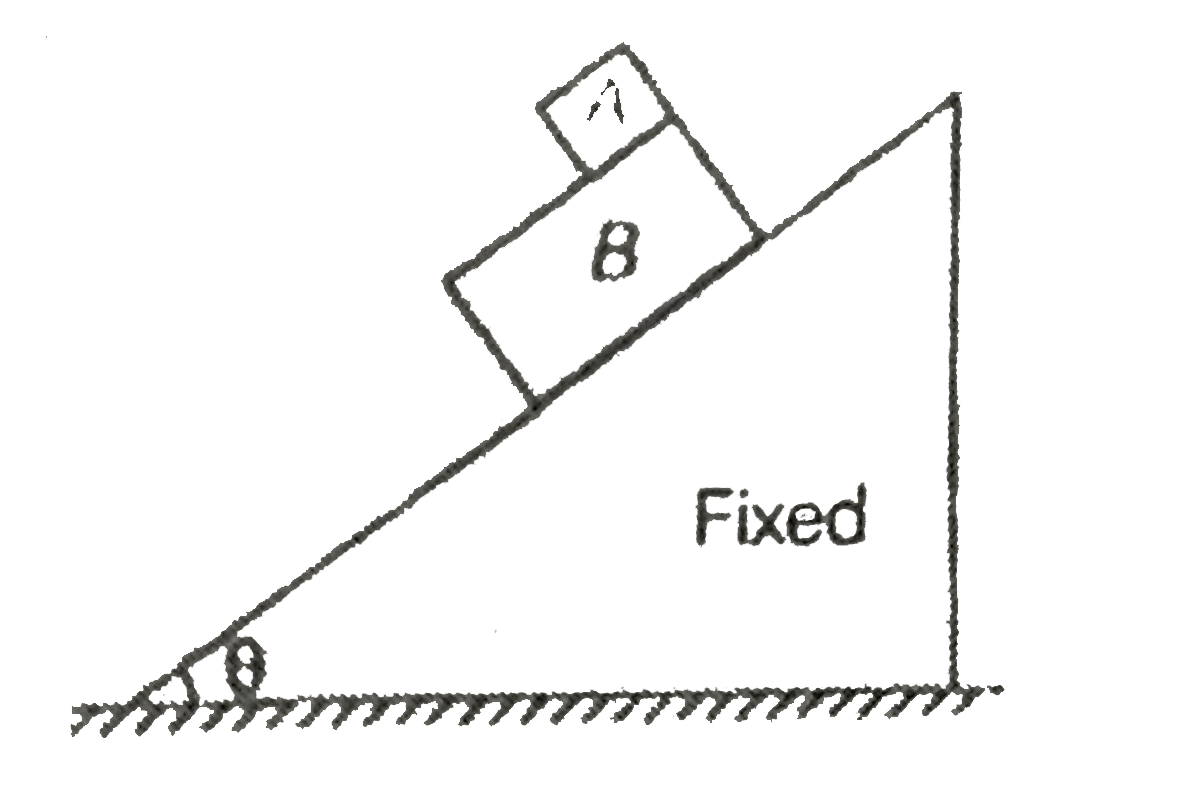
View SolutionA block of mass m1 lies on the top of fixed wedge as shown in fig. and another block of mass m2 lies on top of wedge which is free to move as shown in fig. At time t=0 both the blocks are released from rest from a vertical height h above the respective horizontal surface on which the wedge is placed as shown. There is no friction between block and wedge in both the figures. Let T1 and T2 be the time taken by the blocks respectively to just reach the horizontal surface. then
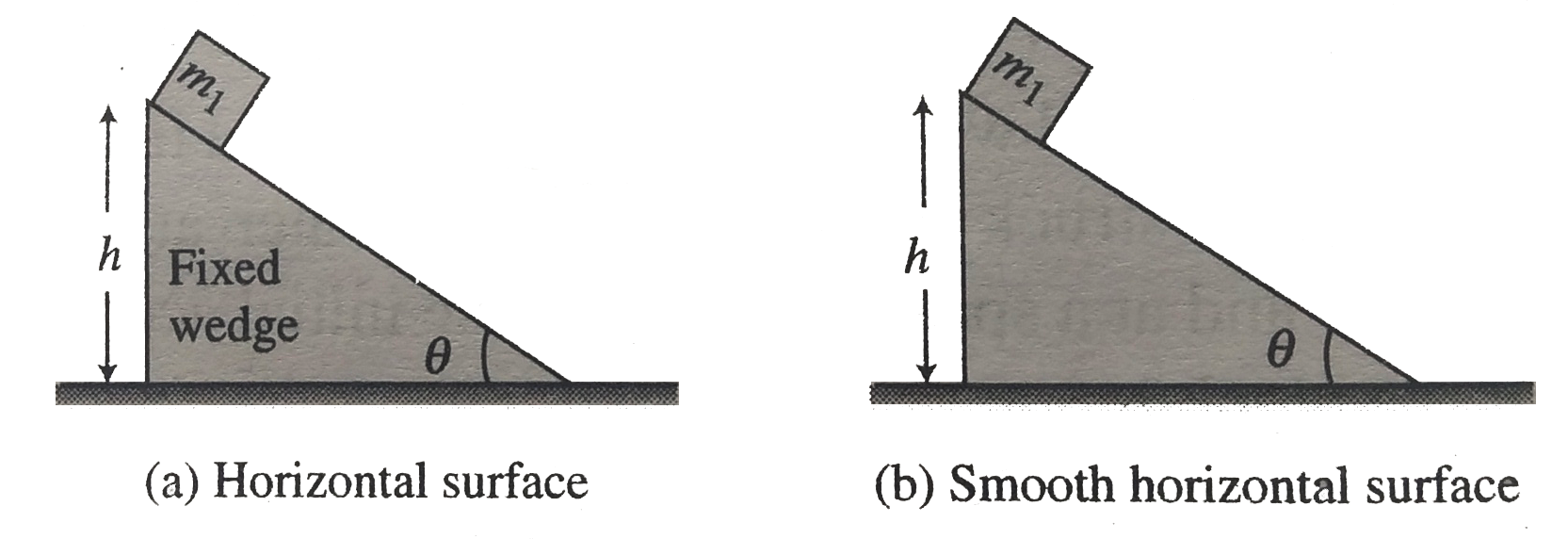
View Solution

